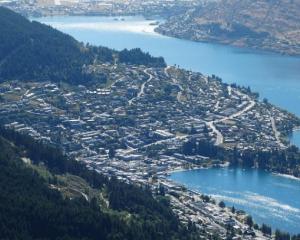At a hearing in Wanaka yesterday, Commissioners Sally Middleton and David Clarke decided an application for subdivision and land-use consent at Emerald Bay, on the western shore of Lake Wanaka, did not need to be publicly notified.
The consented 90-hectare Emerald Bluffs subdivision is in an area zoned rural general and rural lifestyle, with an outstanding natural landscape designation. It already comprises seven residential lots and two common lots and has a strong emphasis on native restoration and sustainable development.
The proposal to further subdivide the site is considered a discretionary activity.
Developer John May, of Longview Environmental Trust, wants to subdivide the larger common lot to create two lots, each with a residential building platform.
The platform on the larger lot would have a consent notice condition preventing the building of a residential dwelling there in the future. It would instead accommodate nursery operations - located elsewhere on the site at present - and a temporary workers' accommodation building.
Covenants prohibiting further development and ensuring houses are designed to blend in to the natural landscape have already been implemented at the subdivision by the trust.
Wetland enhancement, pest plant management and revegetation programmes are also in place. Mr May told the hearing the same controls and management would be applied to the new lots.
"We really wanted to achieve the best possible outcome in an outstanding natural landscape," he said.
Lakes Environmental planner Richard Campion recommended the application be processed without public notice because its adverse effects on the environment would be no more than minor. He said there was "an expectation" in outstanding natural landscapes that applications be notified, except in "special circumstances".
However, Mr May's lawyer, Phil Page, said following a 2009 amendment to the Resource Management Act, an application could only be notified if the effects were more than minor.
"We fly under that radar. We pass the test," Mr Page said.
Lakes Environmental planning team leader Paula Costello said she could not recall any other examples where consent applications for dwellings in outstanding natural landscapes had been non-notified in the eight or nine years she had been working as a planner in the district.
However, if an application could be shown to meet the tests of the Resource Management Act, then there was "no assumption" it needed to be notified.
"[Emerald Bluffs is] a high quality development that does strive to meet a very high test," she said.
Mr Page said the "risk factor" of the notification process was not from neighbours of the development but the "philosophical argument" of whether people should be allowed to live in an outstanding natural landscape.
Next year's district plan review was a "better time for that debate", he said.












